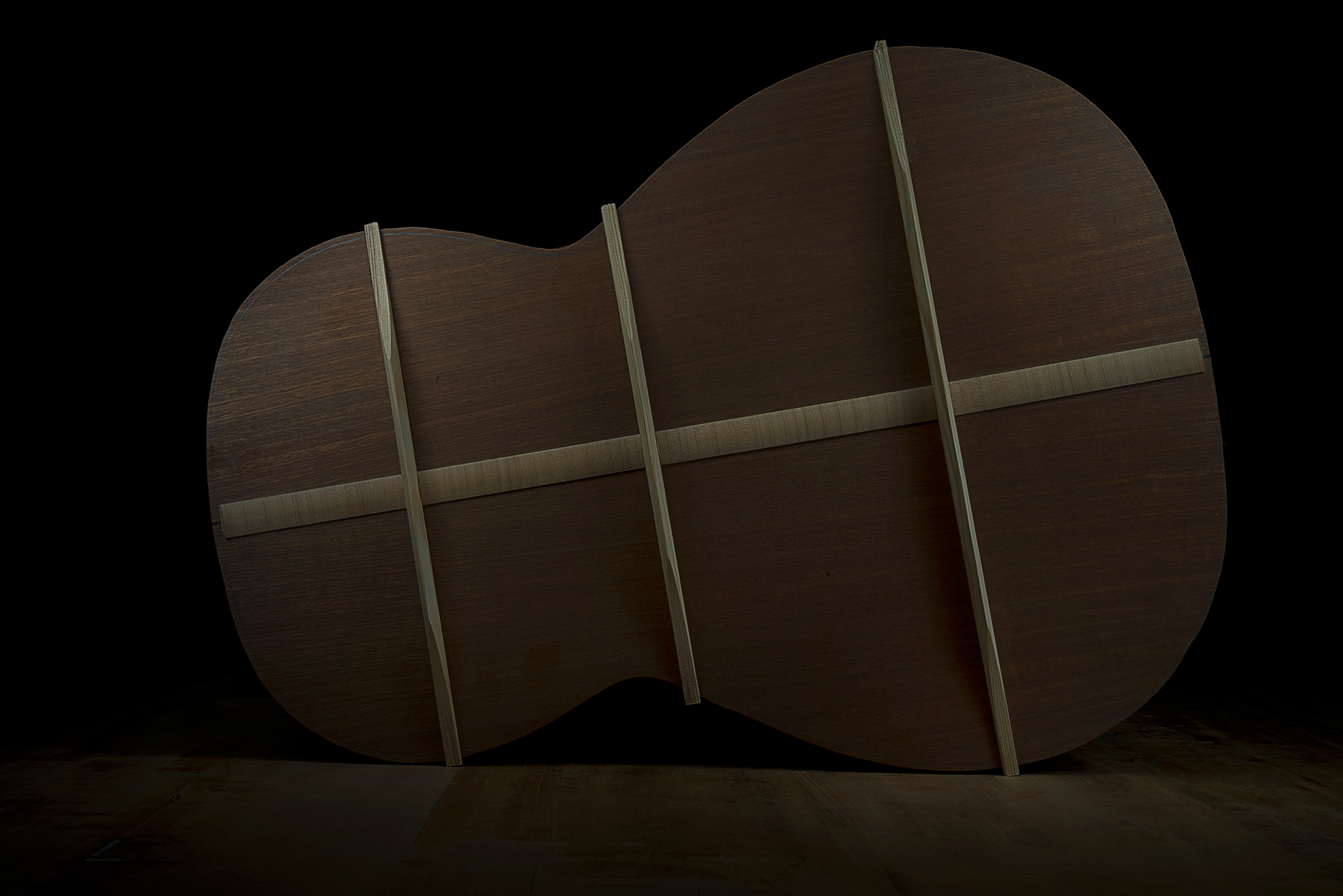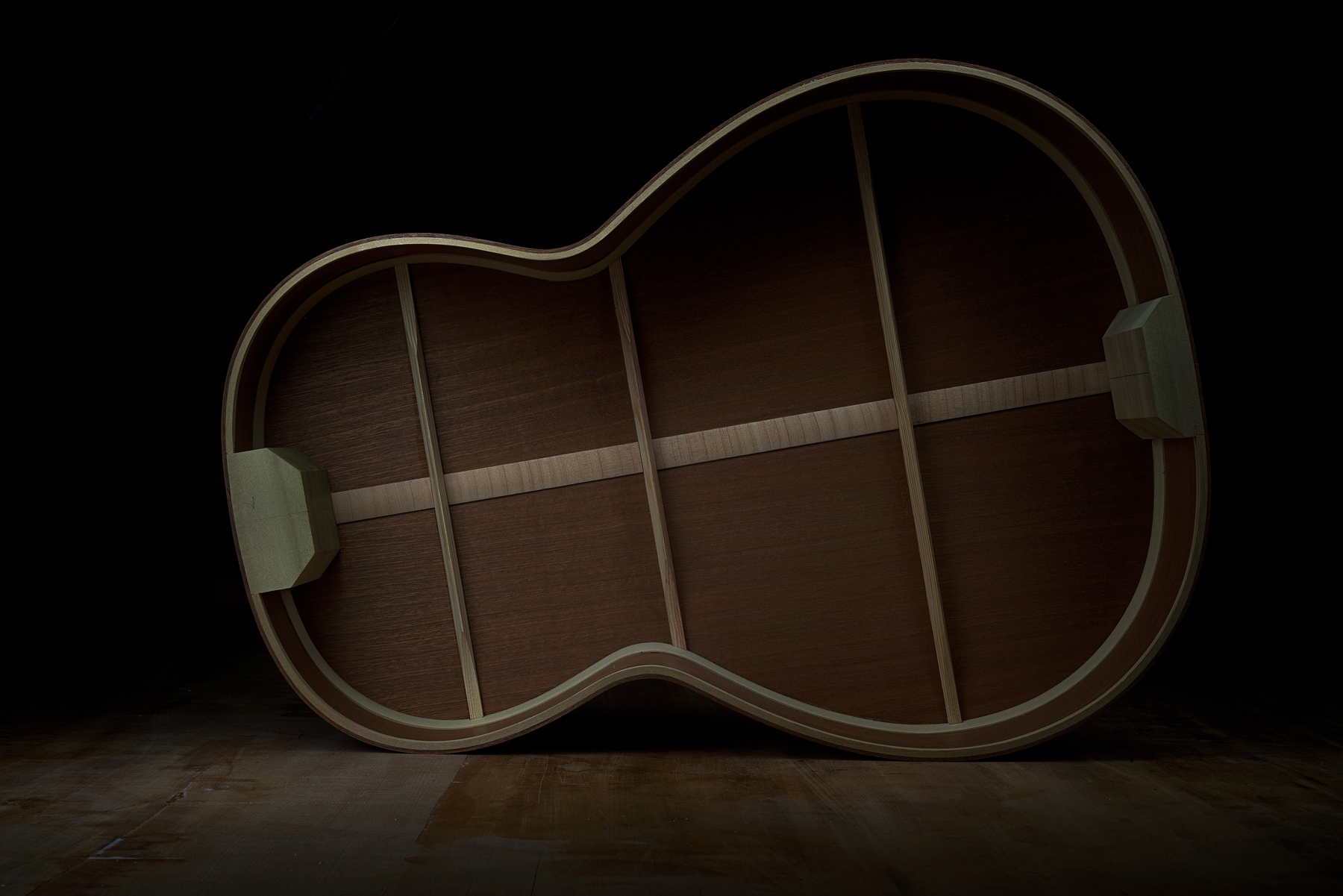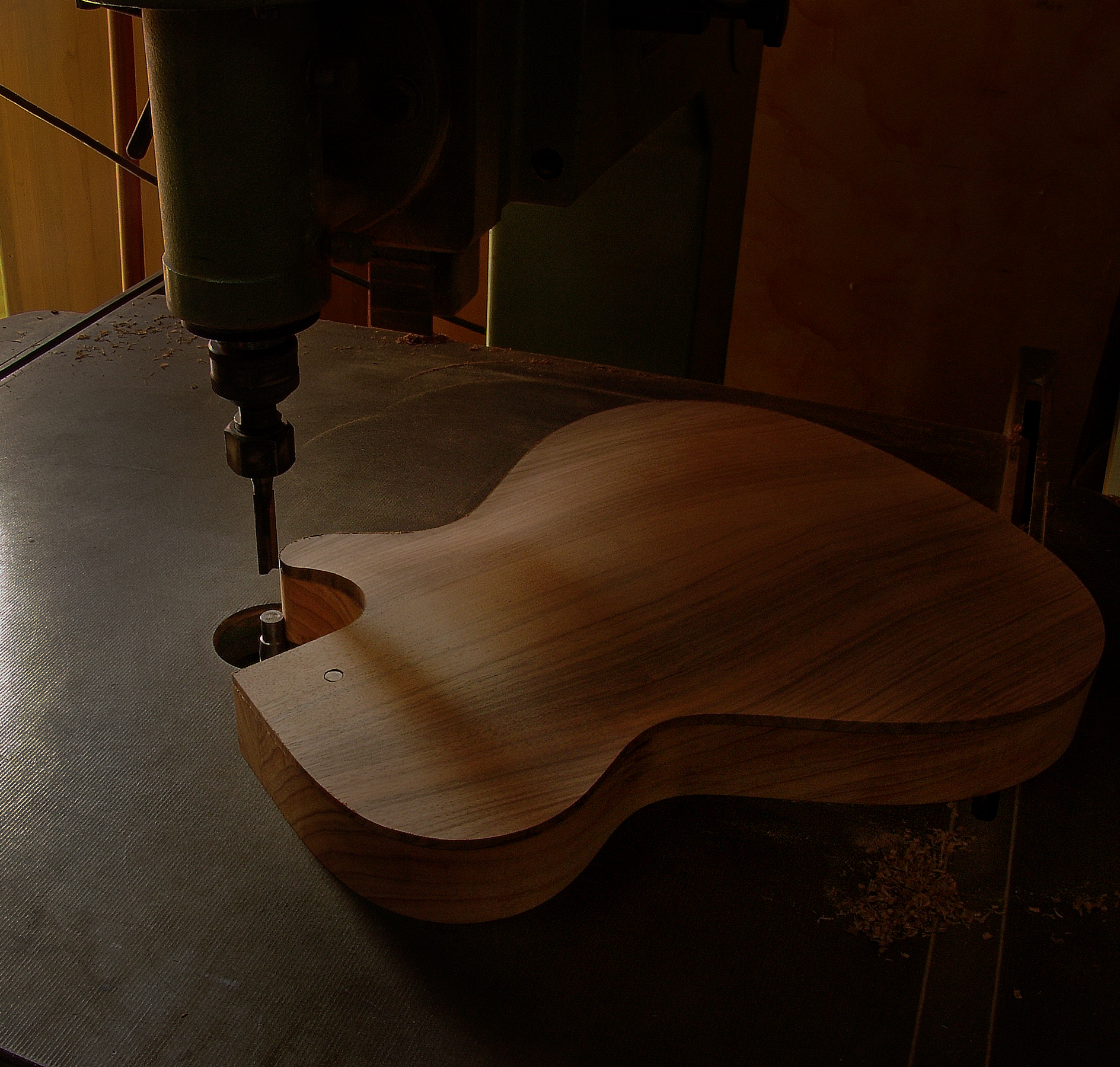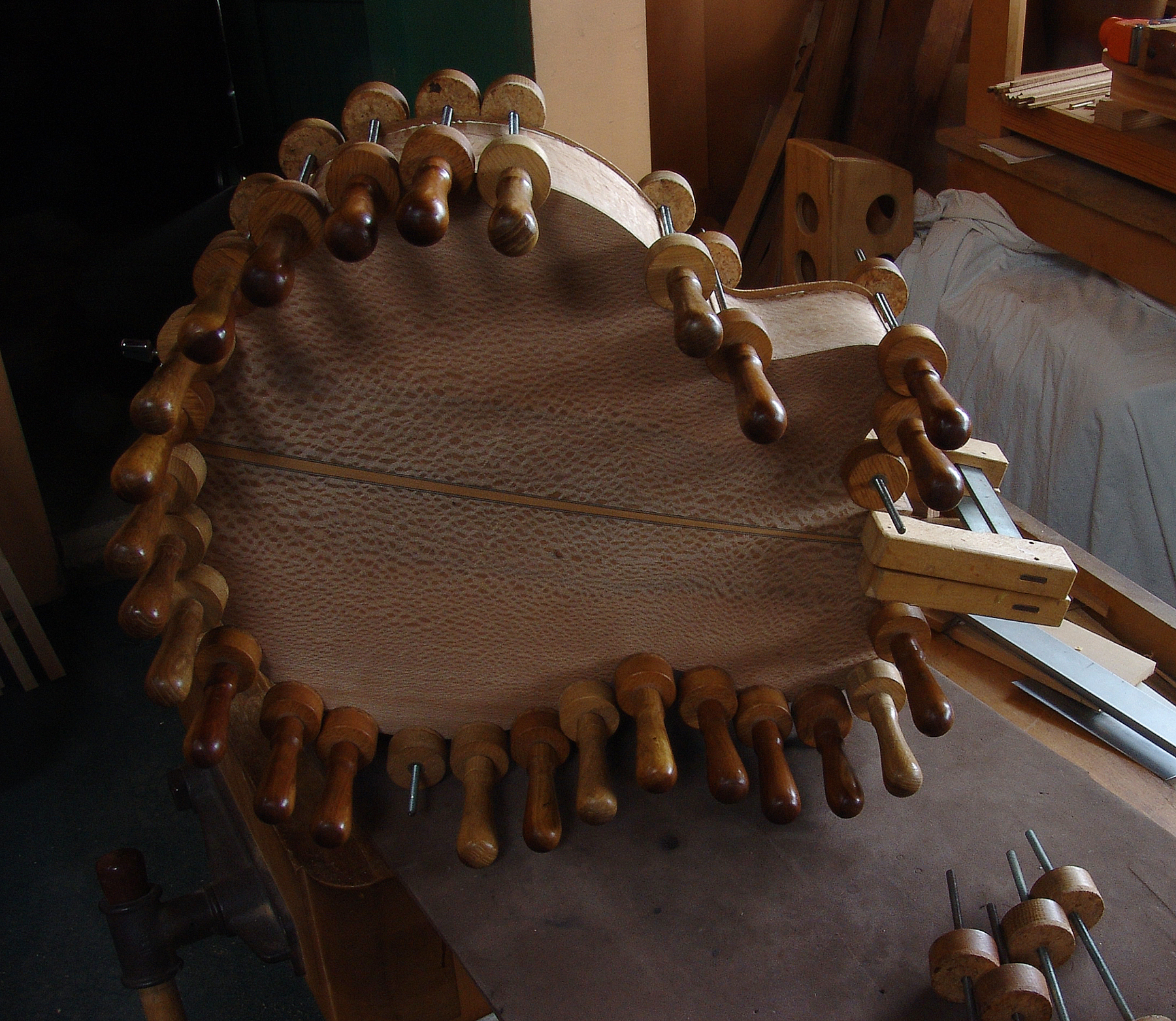
The meticulous process of clamping, here I am clamping together the sides with the butt stock, the trick is keeping everything square and in register.
A fundamental part of any instruments sound box and the shaping of the instrument comes down to the back and sides. One way to tell if an instrument is well made is to use a mirror and check inside the sound box. What you are looking for : Clean tidy joins, no glue runs. Look for smooth shaped bracing and purfling, then examine the centre joint and see if it's been fitted and shaped into the bracing, not just cut and stuck, look for tapered and rounded edges. Check the heal and butt stock, is it a large bulky heal or shaped and modest in size, did the Luthier sand the back and sides timbers or are they crude.
The question : How does the back and sides effect the instruments sound?
If the workmanship hidden inside the instrument is as well constructed as the detailing on the outside of the instrument, then you're looking at a well crated instrument, pride of build and applied talent. The Luthier who knows how to build to this standard is unlikely to use inferior materials. When you come across sloppy work it's the signature of a poor Luthier or a badly mass produced instrument. You might be surprised, many top brands fail under scrutiny.
How does all this effect the instruments sound : The glue joints that aren't bonded correctly leaves the instrument susceptible to buzzing. Poorly glued instruments often lack the rigidity required resulting in an inferior sound. A critical point is the structural integrity of the instrument will invariably failure. If the instrument hasn't been well built it will not endure the test of time, the quality of workmanship is always about the attention to detail. If your interested in knowing more, have a look at the video where I talk about guitar backs and bracing.




